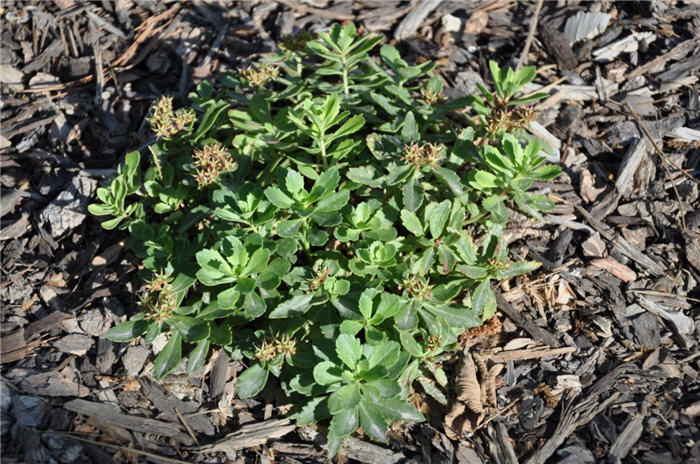| Botanical Name: Sedum divergens 'Old Man Bones' | |
| Common Name: Old Man Bones Stonecrop |

-
Anatomy
-
Culture
-
Design
Plant Type
Ground cover, Perennial, Succulent
Height Range
Under 1'
Flower Color
Pink
Flower Season
Summer, Fall
Leaf Color
Blue Green, Grey Green
Bark Color
n/a
Fruit Color
n/a
Fruit Season
n/a
Sun
Full, Half
Water
Low
Growth Rate
Slow
Soil Type
Sandy, Clay, Loam, Rocky, Unparticular
Soil Condition
Average, Poor, Well-drained, Dry
Soil pH
Neutral
Adverse Factors
n/a
Design Styles
Japanese, Ranch, Spanish
Accenting Features
Unusual Foliage
Seasonal Interest
Summer, Fall
Location Uses
Walls / Fences, With Rocks
Special Uses
Mass Planting, Small Spaces, Hanging Baskets
Attracts Wildlife
n/a
Information by: Stephanie Duer
Photographer: wrong photo
Photographer: wrong photo
-
Description
-
Notes
Very-low growing succulent perennial with light-green leaves with tints of red. the leaves look like little clusters of balls or bones. Small pink flowers bloom in late-summer. Best planted in rock gardens an atop stone walls where it can be seen. Unusual, but worth looking for if you love sedums and succulents.
As a group, sedums prefer well-drained soils, including sandy-loam, clay-loam, or rocky soils, as long as it is well drained. In nature, most sedums occur in light shade or partly sunny sites, while a few are also well-adapted to full sun situations. They can tolerate both drought conditions or more frequent watering, but the key is good drainage. Their xeric nature makes sedums popular for use in rock gardens, roof gardens, wall gardens, and living wreaths.